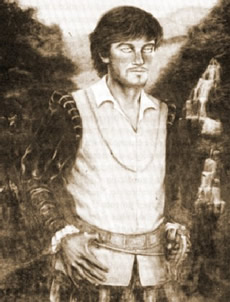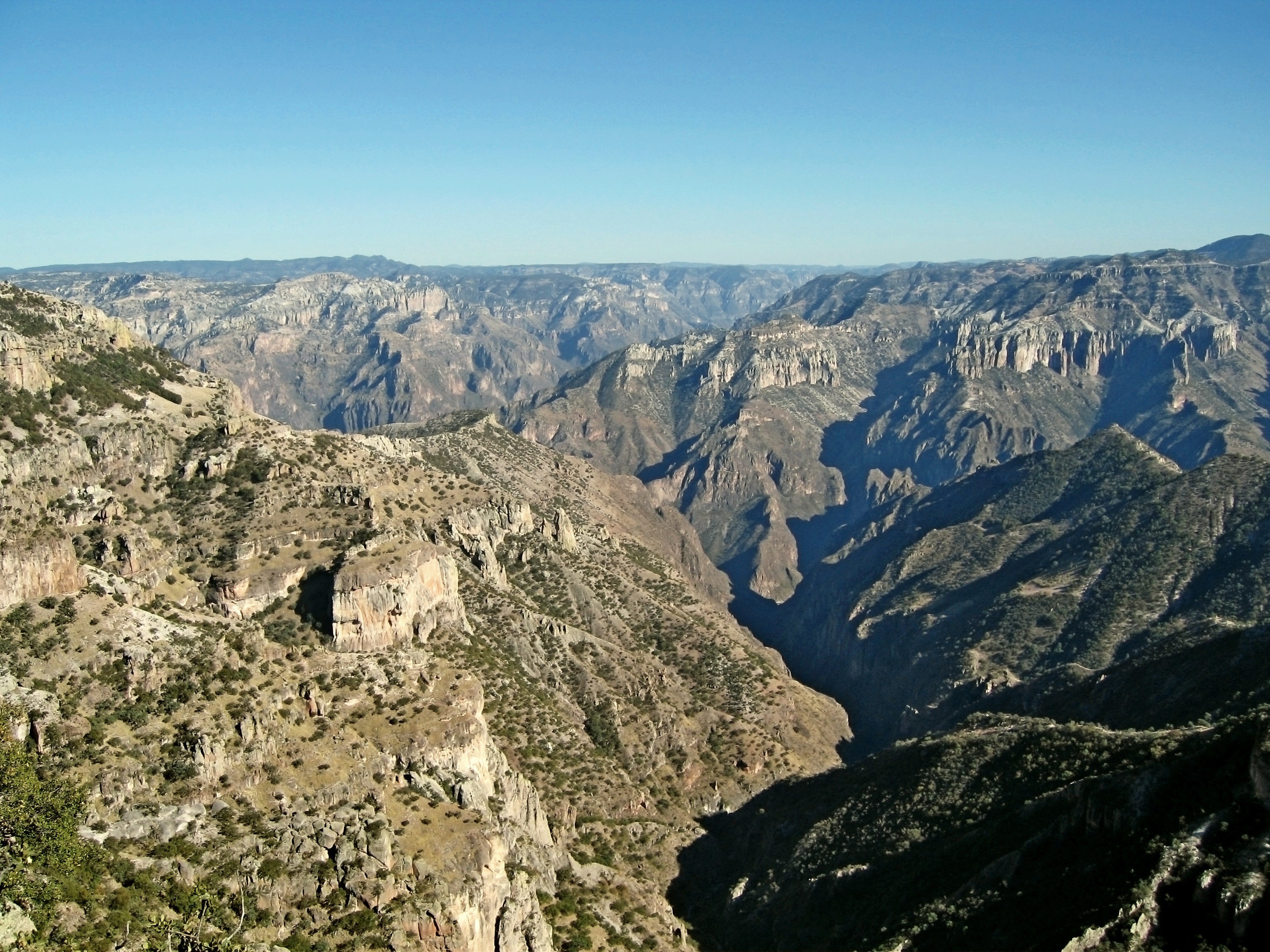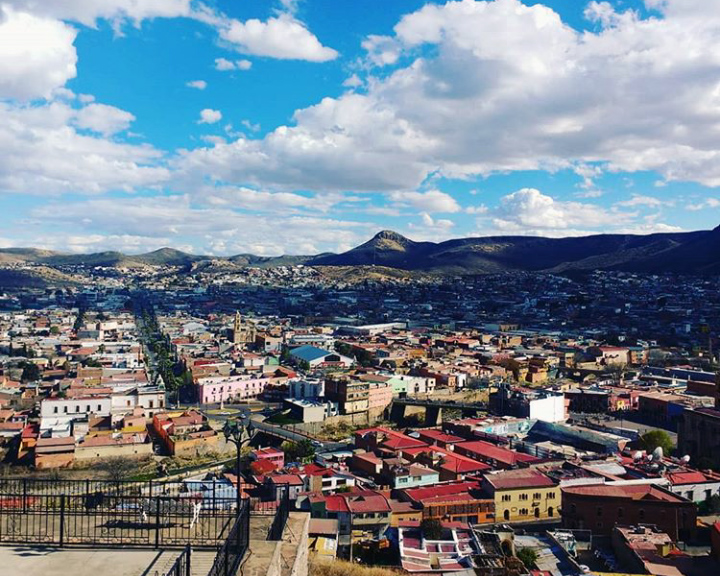|
Durango City
Durango (, ) is the capital and largest city of the northern Mexican state of Durango and the seat of the municipality of Durango. It has a population of 616,068 as of the 2020 census with 688,697 living in the municipality. The city's official name is Victoria de Durango, renamed in honor of the first president of Mexico, Guadalupe Victoria, a native of the state of Durango. The city is at an altitude of in the Valley of Guadiana. Durango was founded on 8 July 1563, by the Spanish explorer Francisco de Ibarra. During the Spanish colonial era the city was the capital of the Nueva Vizcaya province of New Spain, which consisted mostly of what became the Mexican states of Durango and Chihuahua. The city was founded due to its proximity to the Cerro del Mercado, in the northern part of the modern city, which was believed to contain large amounts of silver. Eventually, an important iron deposit was discovered. History The town was named by Francisco de Ibarra after his home ... [...More Info...] [...Related Items...] OR: [Wikipedia] [Google] [Baidu] |
City
A city is a human settlement of a substantial size. The term "city" has different meanings around the world and in some places the settlement can be very small. Even where the term is limited to larger settlements, there is no universally agreed definition of the lower boundary for their size. In a narrower sense, a city can be defined as a permanent and Urban density, densely populated place with administratively defined boundaries whose members work primarily on non-agricultural tasks. Cities generally have extensive systems for housing, transportation, sanitation, Public utilities, utilities, land use, Manufacturing, production of goods, and communication. Their density facilitates interaction between people, government organisations, government organizations, and businesses, sometimes benefiting different parties in the process, such as improving the efficiency of goods and service distribution. Historically, city dwellers have been a small proportion of humanity overall, bu ... [...More Info...] [...Related Items...] OR: [Wikipedia] [Google] [Baidu] |
Durango, Biscay
Durango is a town and municipality of the historical territory and province of Biscay, located in the Basque Country (autonomous community), Basque Country, Spain. It is the main town of Durangaldea, one of the ''comarcas of Spain, comarcas'' of Biscay. Because of its economical activities and population, Durango is considered one of the largest towns in Biscay after the ones that compose the conurbation of Greater Bilbao. Durango has 29,715 inhabitants (2023). The town is crossed by three rivers (as illustrated in the town symbol). The Ibaizabal river is the main river, and lies in the middle of its wide valley, with the Urkiola, Urkiola mountain range and natural park to the south. The tallest peak is Anboto ( in elevation). Etymology There are many differing opinions about the origin of the name Durango. Basque linguist Alfonso Irigoyen has suggested its origin to be in the name ''Duranco'', probably used in the early Middle Ages. [...More Info...] [...Related Items...] OR: [Wikipedia] [Google] [Baidu] |
Diocese
In Ecclesiastical polity, church governance, a diocese or bishopric is the ecclesiastical district under the jurisdiction of a bishop. History In the later organization of the Roman Empire, the increasingly subdivided Roman province, provinces were administratively associated in a larger unit, the Roman diocese, diocese (Latin ''dioecesis'', from the Greek language, Greek term διοίκησις, meaning "administration"). Christianity was given legal status in 313 with the Edict of Milan. Churches began to organize themselves into Roman diocese, dioceses based on the Roman diocese, civil dioceses, not on the larger regional imperial districts. These dioceses were often smaller than the Roman province, provinces. Christianity was declared the Empire's State church of the Roman Empire, official religion by Theodosius I in 380. Constantine the Great, Constantine I in 318 gave litigants the right to have court cases transferred from the civil courts to the bishops. This situa ... [...More Info...] [...Related Items...] OR: [Wikipedia] [Google] [Baidu] |
Benito Juárez
Benito Pablo Juárez García (; 21 March 1806 – 18 July 1872) was a Mexican politician, military commander, and lawyer who served as the 26th president of Mexico from 1858 until his death in office in 1872. A Zapotec peoples, Zapotec, he was the first Indigenous peoples of Mexico, Indigenous president of Mexico and the first democratically elected Indigenous president in the postcolonial Latin America. A member of the Liberal Party (Mexico), Liberal Party, he previously held a number of offices, including the Governor of Oaxaca, governorship of Oaxaca and the presidency of the Supreme Court of Justice of the Nation, Supreme Court. During his presidency, he led the Liberals to victory in the Reform War and in the Second French intervention in Mexico. Born in Oaxaca to a poor rural Indigenous peoples of Mexico, Indigenous family and orphaned as a child, Juárez passed into the care of his uncle, eventually moving to Oaxaca City at the age of 12, where he found work as a domes ... [...More Info...] [...Related Items...] OR: [Wikipedia] [Google] [Baidu] |
Miguel Hidalgo Y Costilla
Don Miguel Gregorio Antonio Ignacio Hidalgo y Costilla Gallaga Mandarte y Villaseñor (8 May 1753 – 30 July 1811), commonly known as Miguel Hidalgo y Costilla or simply Miguel Hidalgo (), was a Catholic priest, leader of the Mexican War of Independence, who is recognized as the Father of the Nation. A professor at the Colegio de San Nicolás Obispo in Valladolid, Hidalgo was influenced by Enlightenment ideas, which contributed to his ouster in 1792. He served in a church in Colima and then in Dolores. After his arrival, he was shocked by the rich soil he had found. He tried to help the poor by showing them how to grow olives and grapes, but in New Spain (modern Mexico) growing these crops was discouraged or prohibited by colonial authorities to prevent competition with imports from Spain. On 16 September 1810 he gave the Cry of Dolores, a speech calling upon the people to protect the interest of King Ferdinand VII, held captive as part of the Peninsular War, by revo ... [...More Info...] [...Related Items...] OR: [Wikipedia] [Google] [Baidu] |
Sierra Madre Occidental
The Sierra Madre Occidental is a major mountain range system of the North American Cordillera, that runs northwest–southeast through northwestern and western Mexico, and along the Gulf of California. The Sierra Madre is part of the American Cordillera, a chain of mountain ranges (cordillera) that consist of an almost continuous sequence that form the western "sounds" of North America, Central America, South America, and West Antarctica. Etymology The Spanish name ''sierra madre'' means "mother mountain range" in English, and ''occidental'' means "western", these thus being the "Western mother mountain range". To the east, from the Spanish ''oriental'' meaning "eastern" in English, the Sierra Madre Oriental range or "Eastern mother mountain range" runs generally parallel to the Sierra Madre Occidental along eastern Mexico and the Gulf of Mexico. The range extends from northern Sonora, a state near the Mexico–U.S. border at Arizona, southeast towards to the Trans-Mexican V ... [...More Info...] [...Related Items...] OR: [Wikipedia] [Google] [Baidu] |
Parral, Chihuahua
Hidalgo del Parral is a city and seat of the municipality of Hidalgo del Parral in the Mexican state of Chihuahua. It is located in the southern part of the state, from the state capital, the city of Chihuahua, Chihuahua. As of 2015, the city of Hidalgo del Parral had a population of 109,510 inhabitants, while the metro area had a population of 129,688 inhabitants. During the colonial period the city was a significant supplier of silver to the Spanish empire and was known as San José del Parral. The name of the city was changed after independence from Spain, in honour of Fr Miguel Hidalgo, widely considered the 'Father of the Country'. Geology Hidalgo del Parral mushroomed from the base of a hill of silver known as the Cerro la Prieta. The hill, is a part of the eastern foothill belt of the Sierra Madre Occidental, characterized by thick eroded deposits of tertiary volcanics. The bed rocks of both sedimentary and volcanic origin supply both lead and lead-free silver vein ... [...More Info...] [...Related Items...] OR: [Wikipedia] [Google] [Baidu] |
Mexico City
Mexico City is the capital city, capital and List of cities in Mexico, largest city of Mexico, as well as the List of North American cities by population, most populous city in North America. It is one of the most important cultural and financial centers in the world, and is classified as an Globalization and World Cities Research Network, Alpha world city according to the Globalization and World Cities Research Network (GaWC) 2024 ranking. Mexico City is located in the Valley of Mexico within the high Mexican central plateau, at an altitude of . The city has 16 Boroughs of Mexico City, boroughs or , which are in turn divided into List of neighborhoods in Mexico City, neighborhoods or . The 2020 population for the city proper was 9,209,944, with a land area of . According to the most recent definition agreed upon by the federal and state governments, the population of Greater Mexico City is 21,804,515, which makes it the list of largest cities#List, sixth-largest metropolitan ... [...More Info...] [...Related Items...] OR: [Wikipedia] [Google] [Baidu] |
Luis De Velasco, 2nd Viceroy Of New Spain
Luis de Velasco y Ruiz de Alarcón (1511 – July 31, 1564) was the second viceroy of New Spain during the Spanish colonization of the Americas in the mid-sixteenth century. Biography Velasco was born in the town of Carrión de los Condes, in the province of Palencia, in 1511. The son of a wealthy nobleman, Velasco received formal education at a young age. By 1547, he had become viceroy and leader of Spain's armed forces in the Kingdom of Navarre. Impressed with Velasco's achievements and loyalty to the Spanish crown, Emperor Charles V (King Charles I of Spain) sent him to New Spain, in 1550, to deal with problems in the Spanish colonies, among them slavery and the encomienda system. He was accompanied by his son, Luis de Velasco, marqués de Salinas, himself a future viceroy of New Spain. Velasco replaced the previous viceroy, Antonio de Mendoza. Mendoza had been given his choice of the Viceroyalty of Mexico or of Peru, with Velasco to fill the other office. Velasco ar ... [...More Info...] [...Related Items...] OR: [Wikipedia] [Google] [Baidu] |
Tepehuán
The Tepehuán are an Indigenous people of Mexico. They live in Northwestern, Western, and some parts of North-Central Mexico. The Indigenous Tepehuán language has three branches: Northern Tepehuan language, Northern Tepehuan, Southeastern Tepehuan language, Southeastern Tepehuan, Southwestern Tepehuan language, Southwestern Tepehuan. The heart of the Tepehuan territory is in the Valley of Guadiana in Durango, but they eventually expanded into southern Chihuahua (state), Chihuahua, eastern Sinaloa, and northern Jalisco, Nayarit, and Zacatecas. By the time of the Spanish conquest of the Aztec Empire, Tepehuan lands spanned a large territory along the Sierra Madre Occidental. Tepehuán groups are divided into the Ódami (Northern Tepehuán), Audam (Southwestern Tepehuán), and O'dam (Southeastern Tepehuán), each with their own language, culture, and beliefs. Name ''Tepehuán'', alternately ''Tepeguán'', derives from the Nahuatl term ''Tēpēhuanih'', meaning "Mountain Dwellers" ... [...More Info...] [...Related Items...] OR: [Wikipedia] [Google] [Baidu] |
Zacatecas
Zacatecas, officially the Free and Sovereign State of Zacatecas, is one of the Political divisions of Mexico, 31 states of Mexico. It is divided into Municipalities of Zacatecas, 58 municipalities and its capital city is Zacatecas City, Zacatecas. It is located in north-central Mexico and is bordered by the states of Durango to the northwest, Coahuila to the north, Nayarit to the west, San Luis Potosí and Nuevo León to the east, and Jalisco, Guanajuato and Aguascalientes to the south. The state is best known for its rich deposits of silver and other minerals, its Spanish Colonial architecture, colonial architecture and its importance during the Mexican Revolution. Its main economic activities are mining, agriculture and tourism. Geography Zacatecas is located in the center-north of Mexico, and covers an area of 75,284 km2, the tenth-largest state in the country. It borders the states of Nayarit, Jalisco, Aguascalientes, San Luis Potosí, Coahuila and Durango and is divided in ... [...More Info...] [...Related Items...] OR: [Wikipedia] [Google] [Baidu] |
Nahuas
The Nahuas ( ) are a Uto-Nahuan ethnicity and one of the Indigenous people of Mexico, with Nahua minorities also in El Salvador, Guatemala, Honduras, Nicaragua, and Costa Rica. They comprise the largest Indigenous group in Mexico, as well as the largest population out of any North American Indigenous people group who are native speakers of their respective Indigenous language. Amongst the Nahua, this is Nahuatl. When ranked amongst all Indigenous languages across the Americas, Nahuas list third after speakers of Guaraní and Quechua. The Mexica (Aztecs) are of Nahua ethnicity, as are their historical enemies and allies of the Spaniards: the Tlaxcallans (Tlaxcaltecs). The Toltecs which predated both groups are often thought to have been Nahua as well. However, in the pre-Columbian period Nahuas were subdivided into many groups that did not necessarily share a common identity. Their Nahuan languages, or Nahuatl, consist of many variants, several of which are mutually uninte ... [...More Info...] [...Related Items...] OR: [Wikipedia] [Google] [Baidu] |








